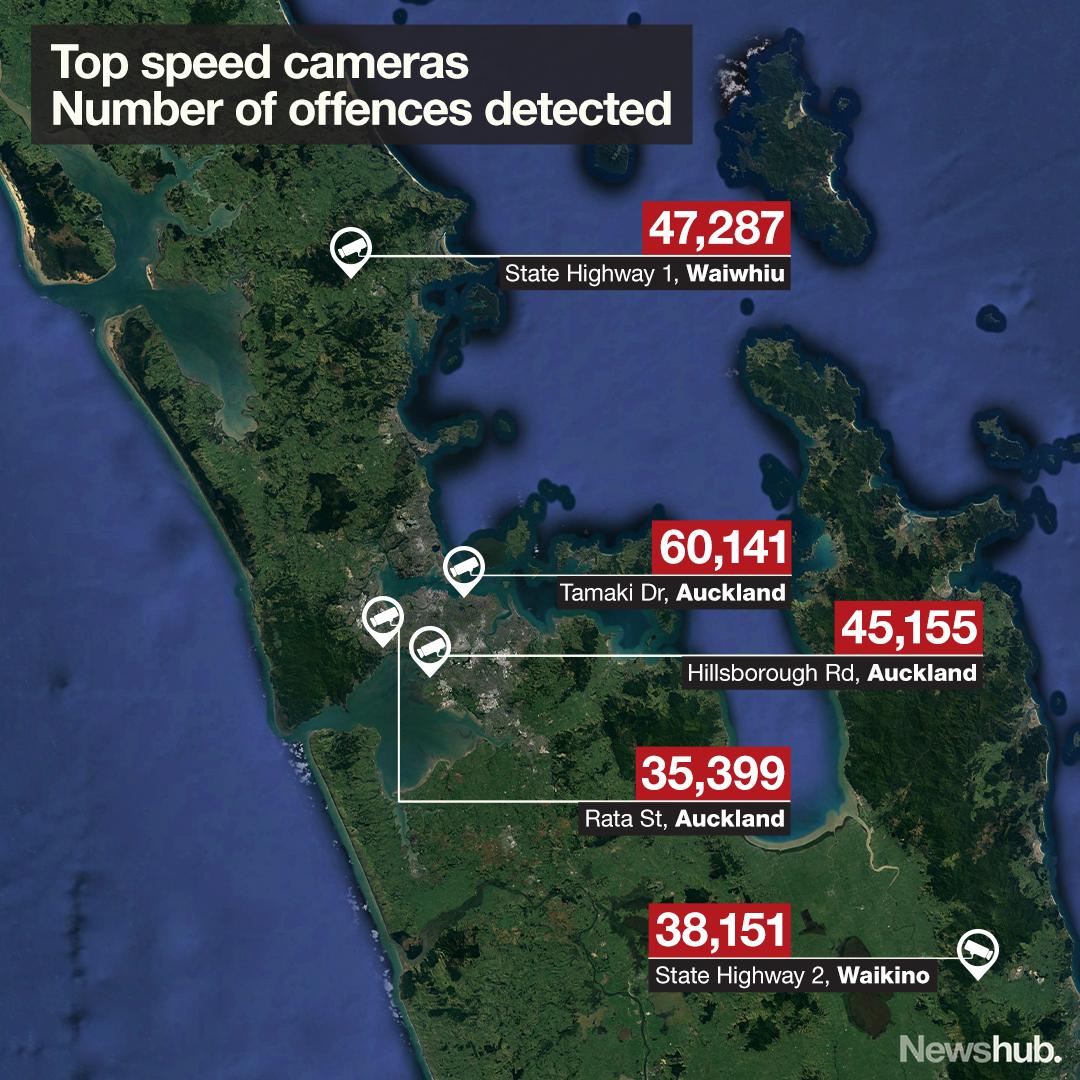New Zealand has a new highest ticketing fixed speed camera, with the machine on Tamaki Dr in Auckland recording 60,141 offences in 2019.
The busy 50km/h stretch of road in Auckland Central, with a camera placed between Solent St and Ngapipi Rd, has seen a large jump in the number of detected offences, up from 36,253 in 2018. However, the camera was only live in 2018 for approximately seven months, compared to the full year in 2019.
That static speeding camera alone generated $5,328,420 of the $55,223,460 raked in nationwide last year through the country's cameras, up just under $500,000 on 2018.
Last year, there were 654,221 offences detected across the nation. The majority of the offences were detected in the Auckland region.
Coming in second to Tamaki Dr was a camera on State Highway 1 north of Warkworth between Waiwhiu Rd and Forestry Rd. It detected 47,287 offences and generated $4,403,360.
In the South Island, the camera recording the most offences is in Oamaru between Solway St and Awamoa Rd on Wansbeck St. There were 20,902 detections there which generated $1,754,910.
The largest number of offences recorded in Waikato was east of Waihi in Waikino, while Wellington's top machine was on State Highway 1, between the Newlands Rd overbridge and Glover St.
The highest ticketing camera in 2018, on Rata St in New Lynn, Auckland, was the fifth biggest ticketer last year with 35,399, down from 48,149.

How much a speeding driver will be charged is dependent on how fast over the limit they were going. At the bottom of the range is a $30 fine for driving less than 10km/h over the limit, up to a $630 fine for going between 46km/h and 50km/h over the limit. Anything north of 50km/h may also result in a charge of careless, dangerous or reckless driving.
The money generated through the speed cameras are transferred into Government funds spent through its budget processes.
In November, the Government announced warnings would be placed before each of the 48 fixed speed cameras across the country.
AA regulations principal advisor Mark Stockdale said at the time that it's more important the cameras make drivers slow down rather than raking in fines.
"If people don't know a speed camera is there, then they don't get the opportunity to check their speed and slow down if necessary. If it issues a ticket, then it's not doing its job," he said.
Cameras are located in places where there has been issues with excessive speed or has a history with crashes causing death or injury.
"Police's focus is on influencing a change in behaviour of drivers detected committing offences that impact on the safety of them and other road users, not on any fees imposed as a result of infringement notices issued," the police website says.
In 2019 there were 353 deaths on New Zealand roads, down from 378 in 2018, but still higher than most years last decade. As part of the Government's Road to Zero safety strategy - based on Sweden's Vision Zero approach of trying to achieve a system with no fatalities involving road traffic - speed limits and the penalties around breaching rules are under review.
New Zealand's top 5 ticketing cameras by offences detected:
Tamaki Dr, Auckland - 60,141 offences - $5,328,420 generated.
State Highway 1, Waiwhiu - 47,287 offences - $4,402,360 generated.
Hillsborough Rd, Auckland - 45,155 offences - $3,883,060 generated.
State Highway 2, Waikino - 38,151 offences - $3,326,370 generated
Rata St, Auckland - 35,399 offences - $2,919,540 generated.



